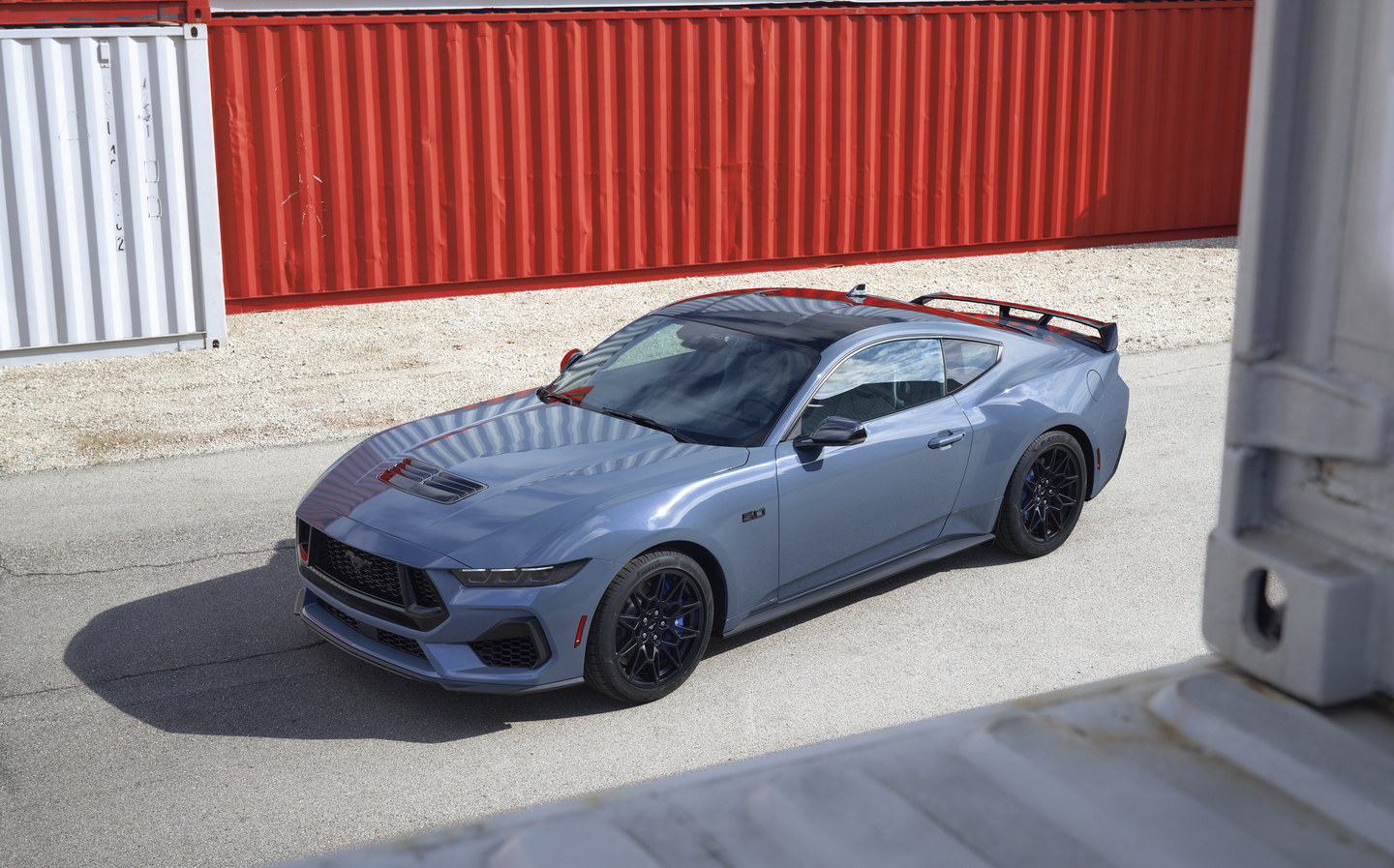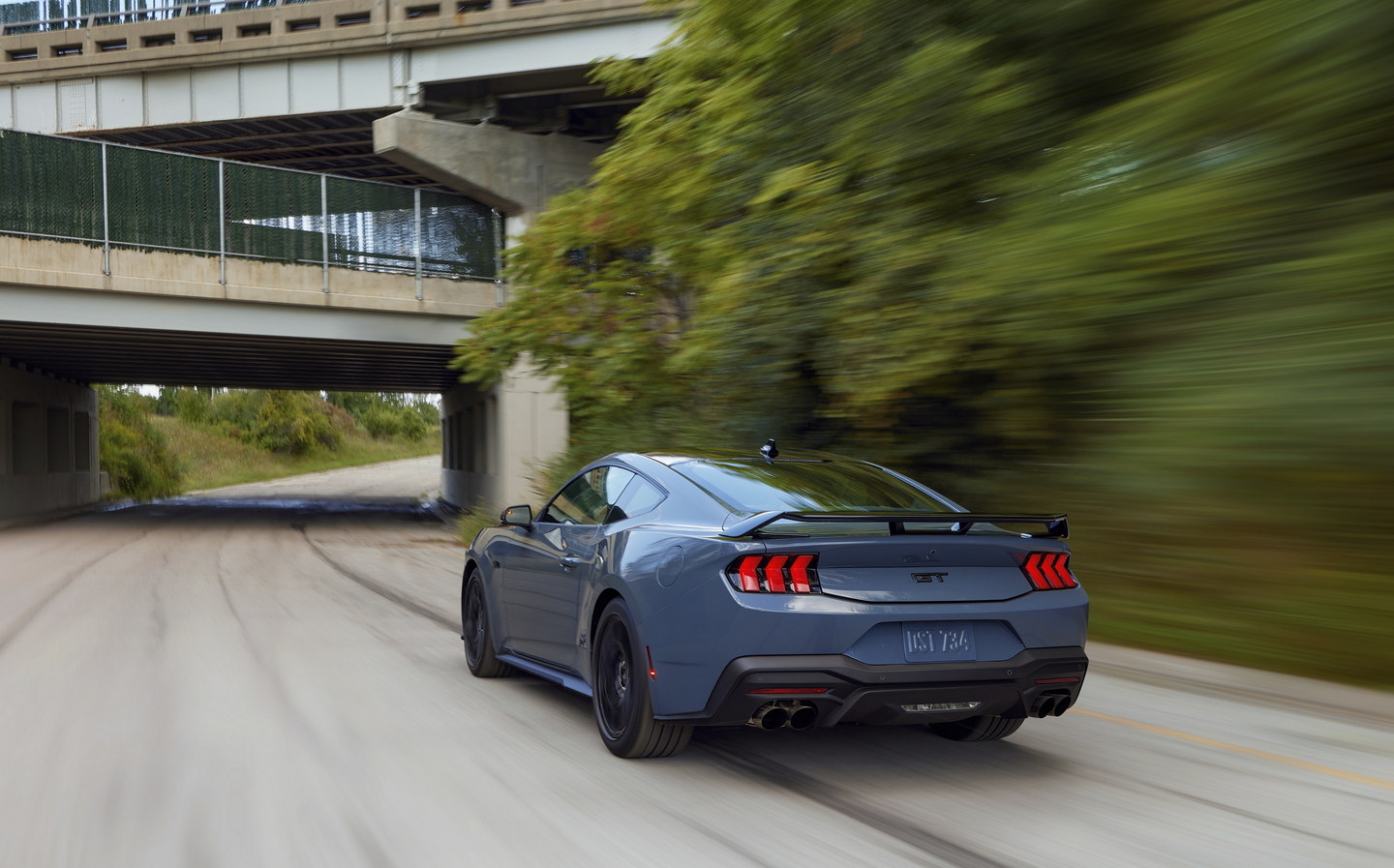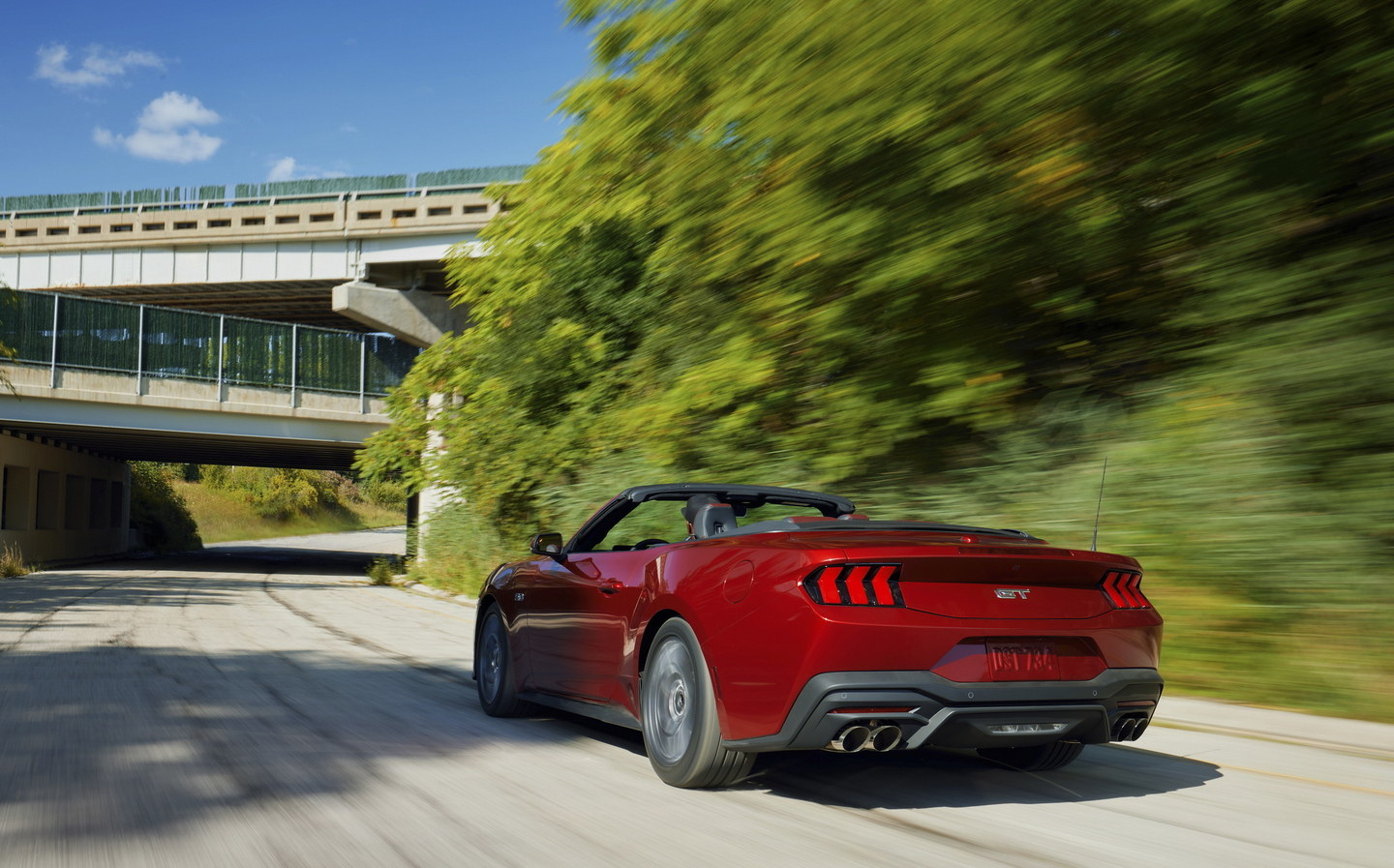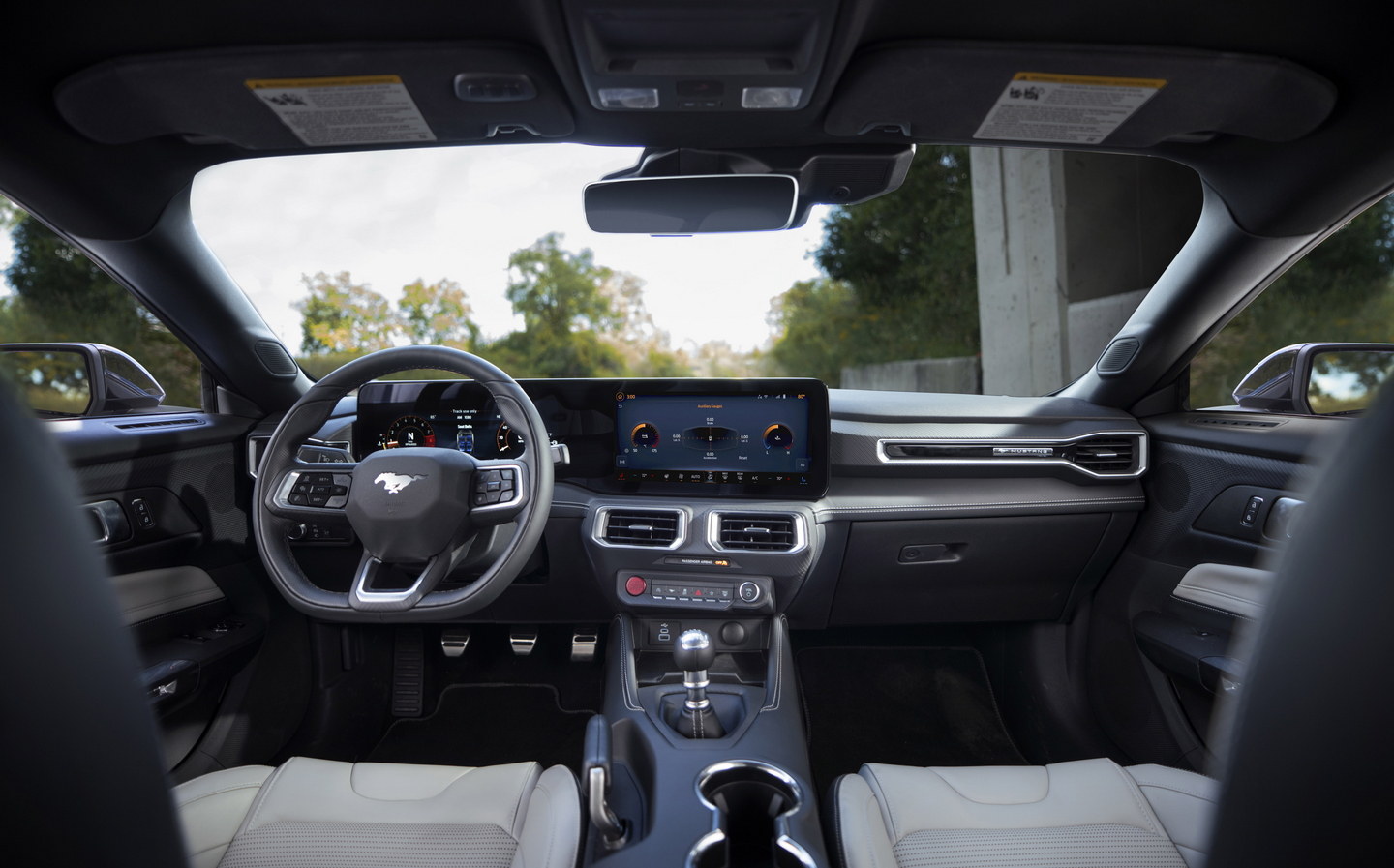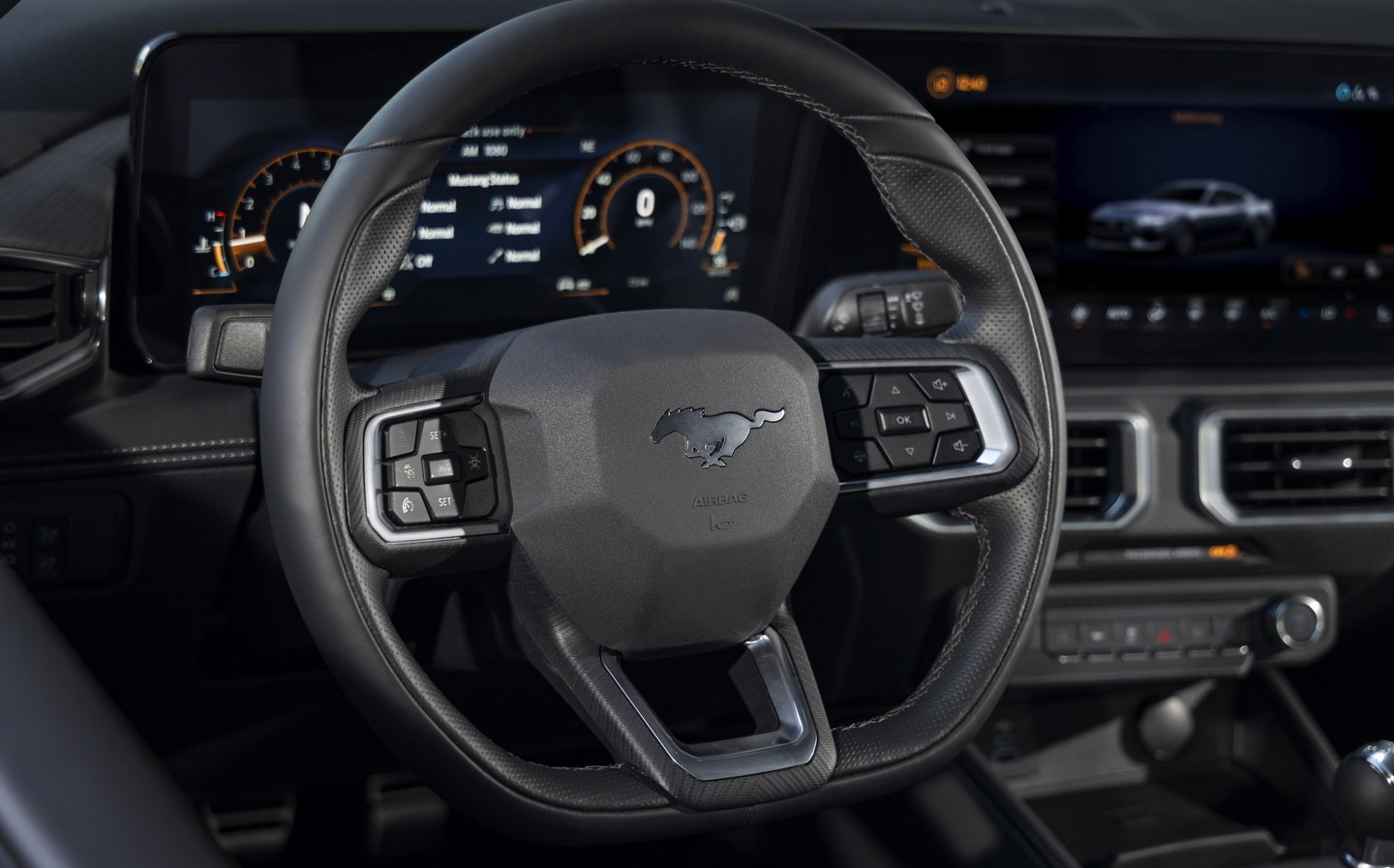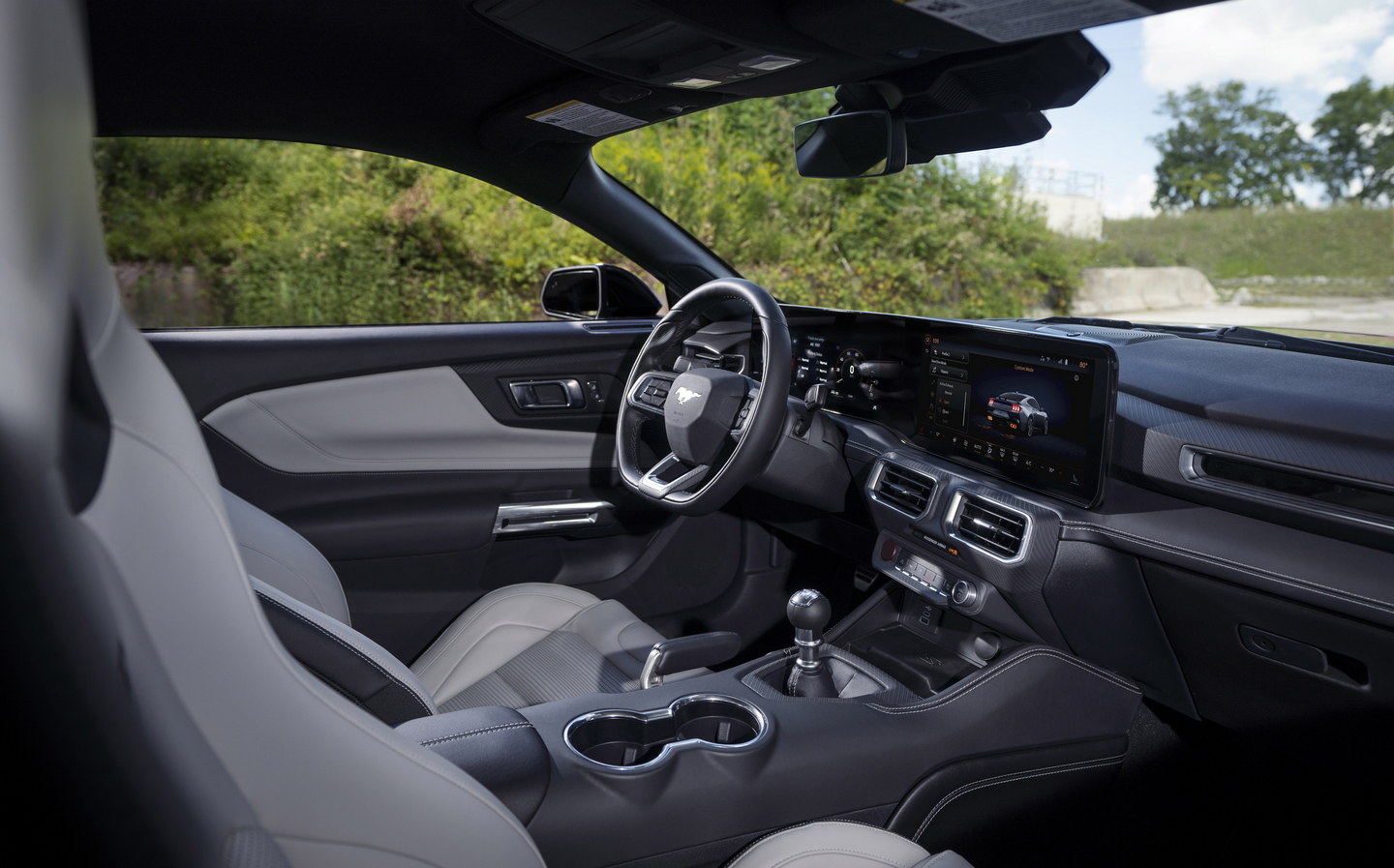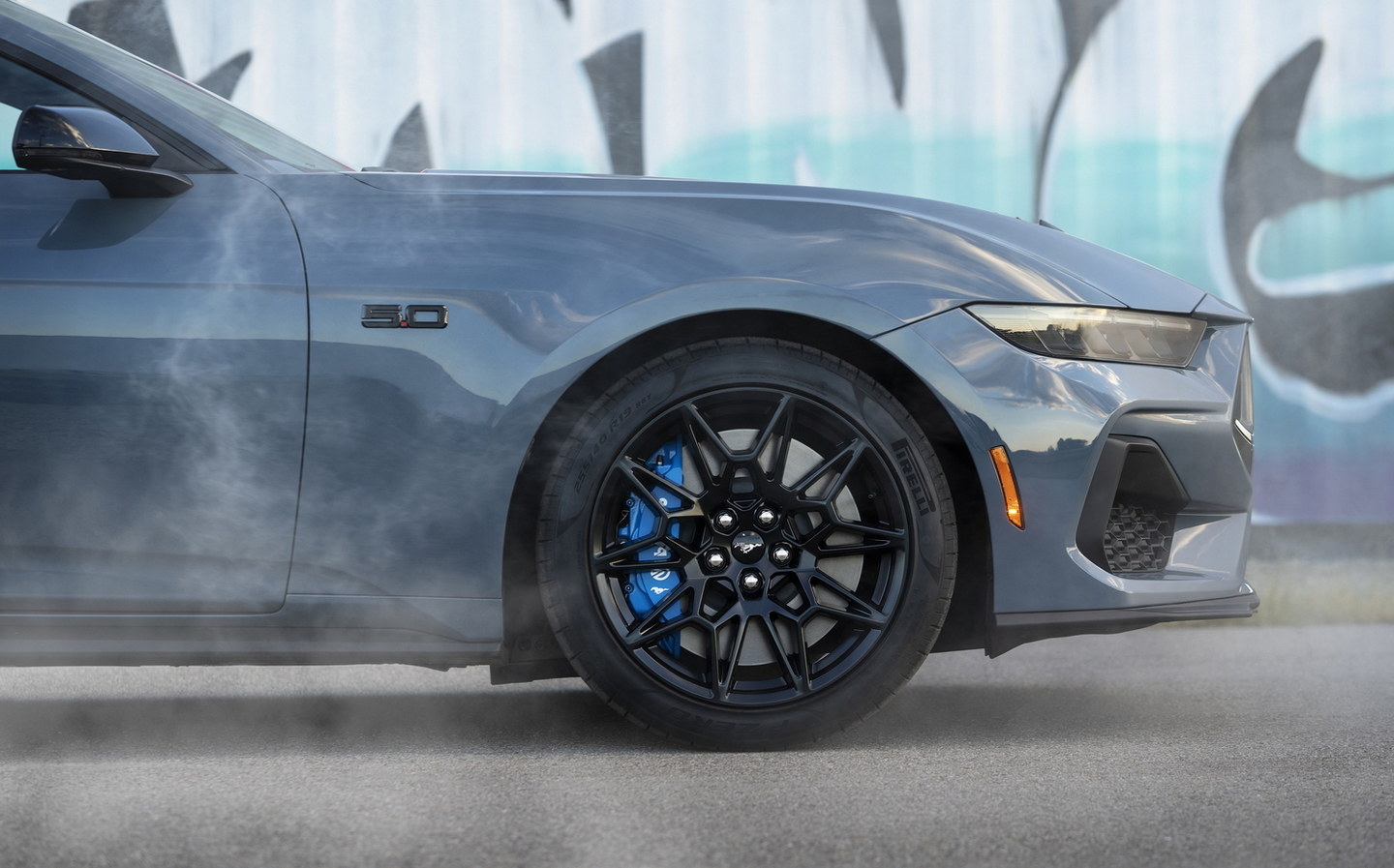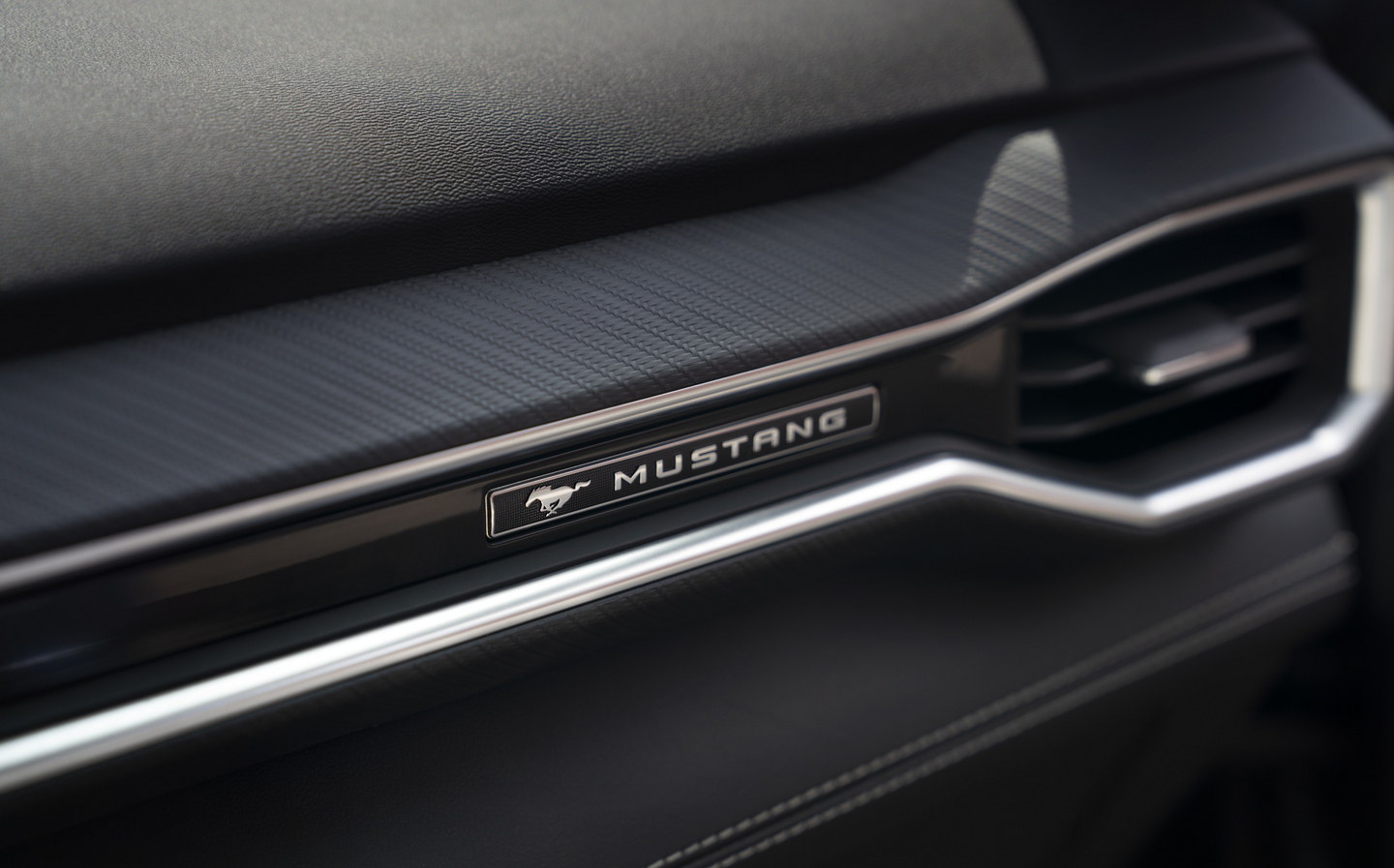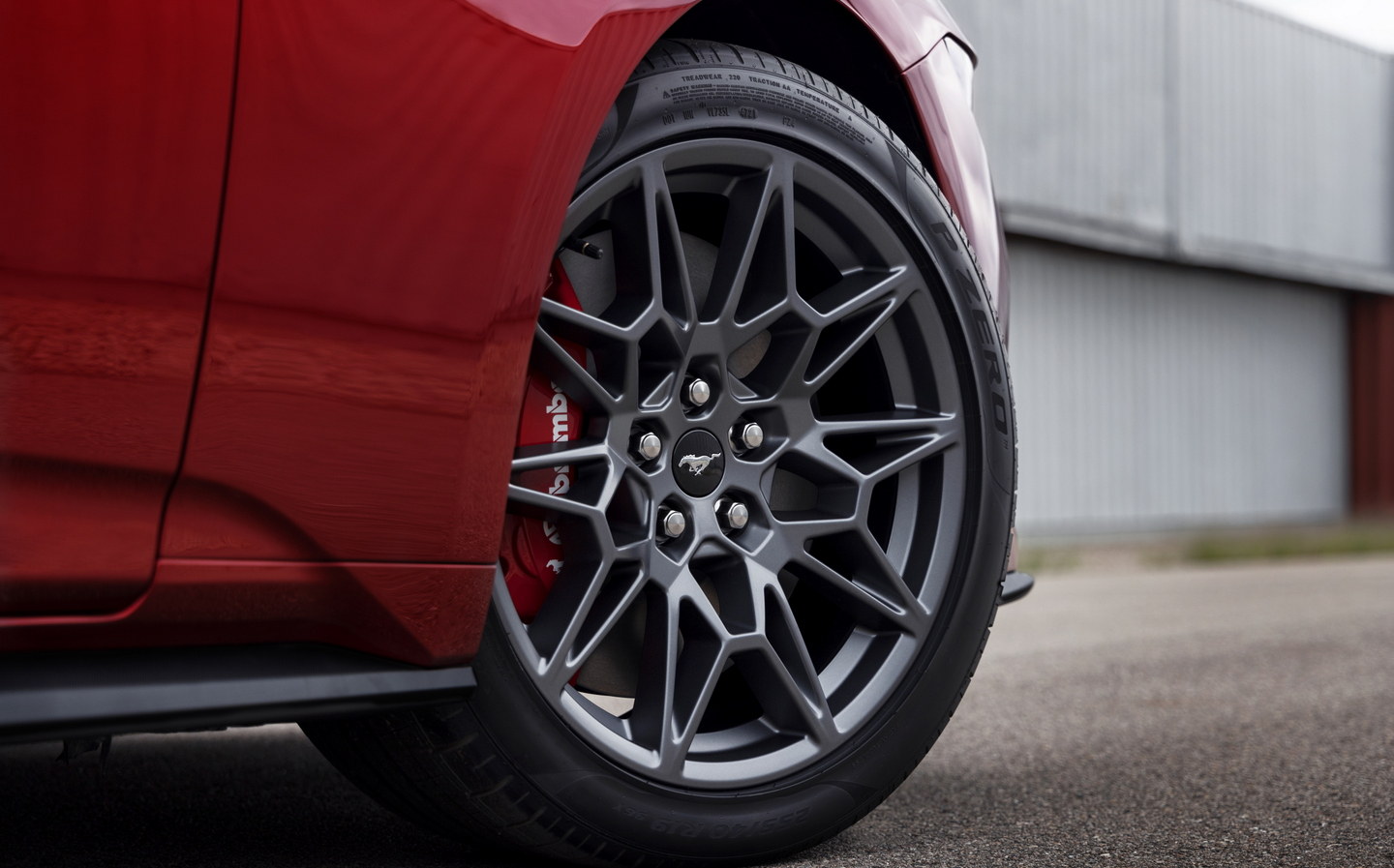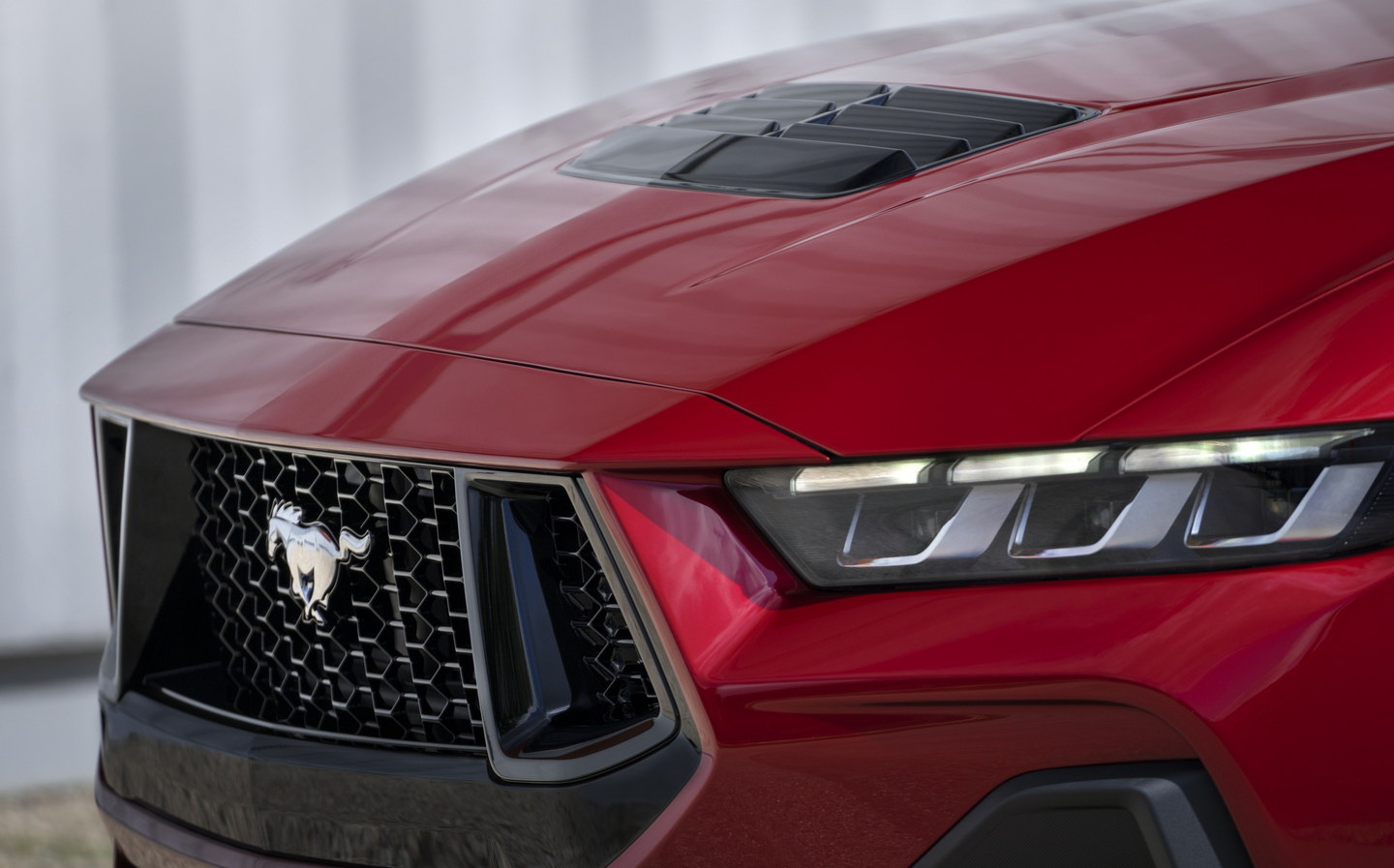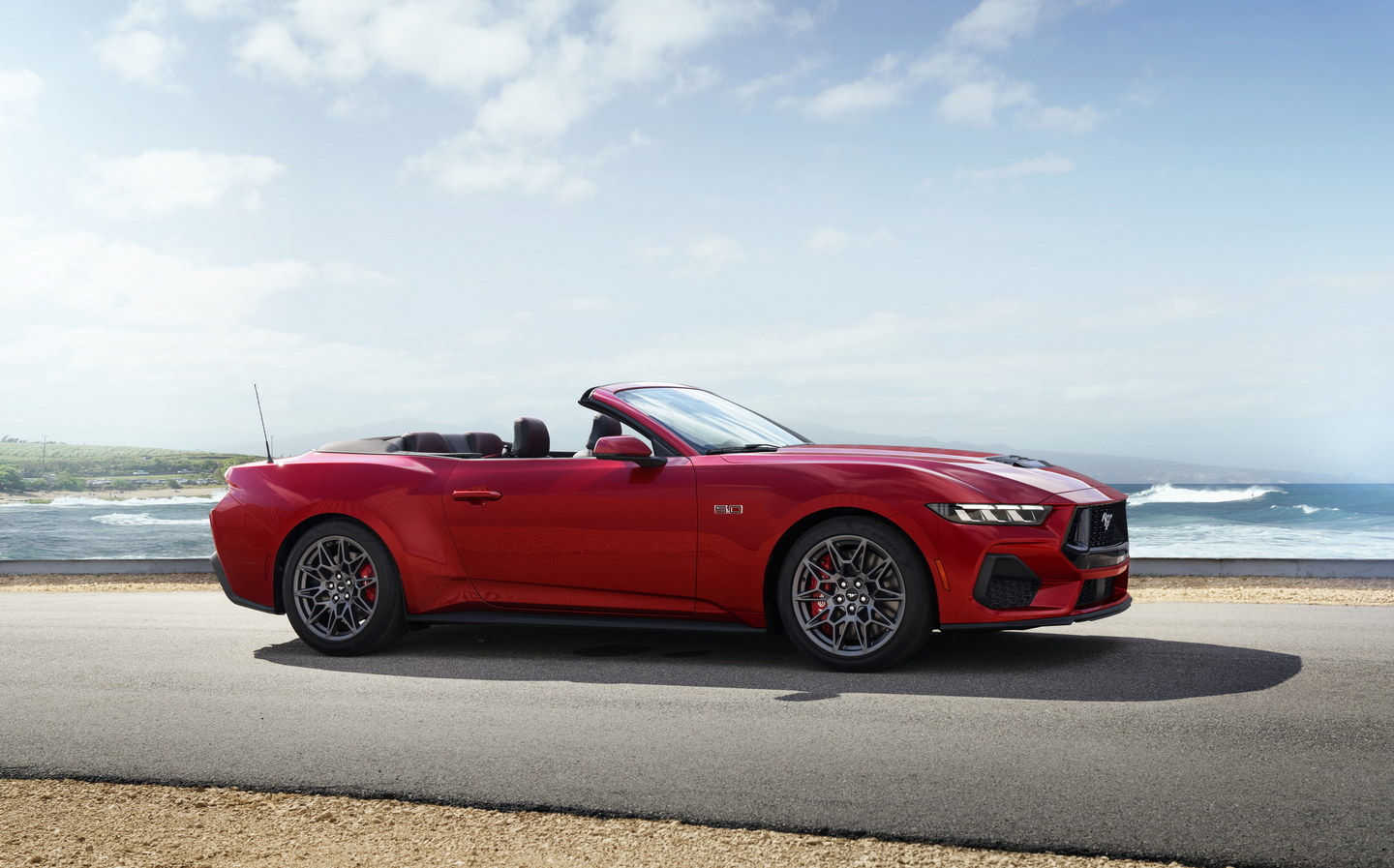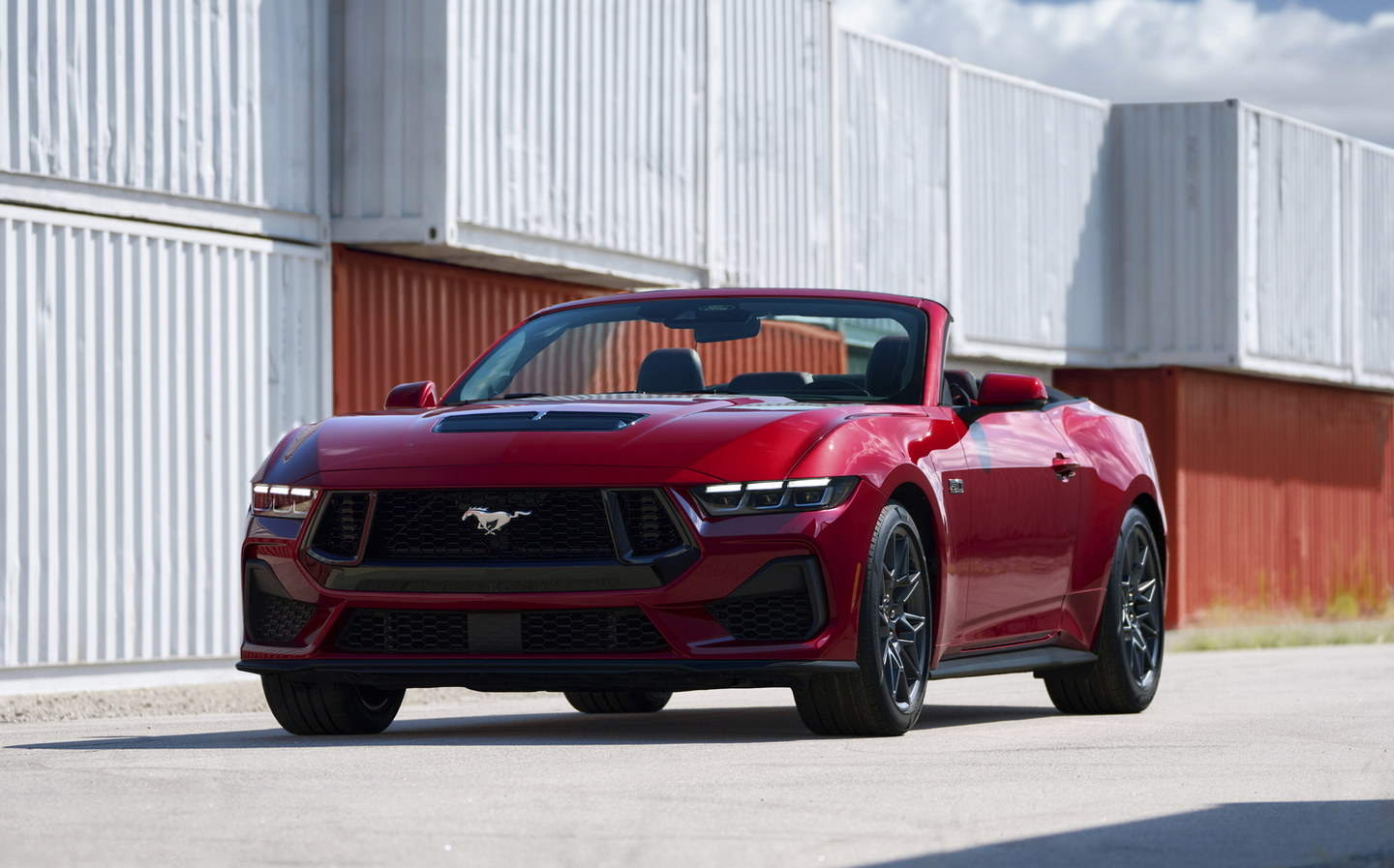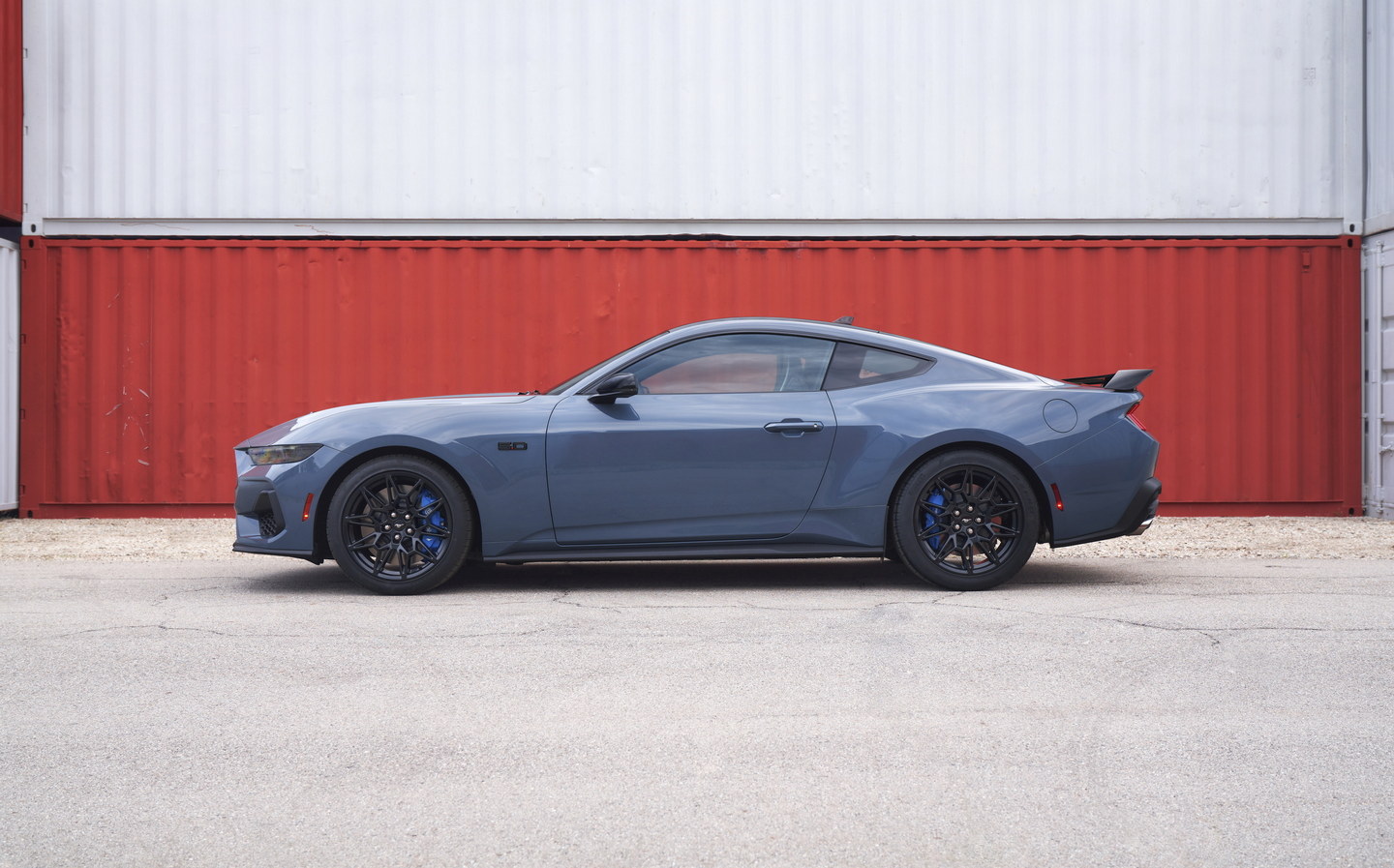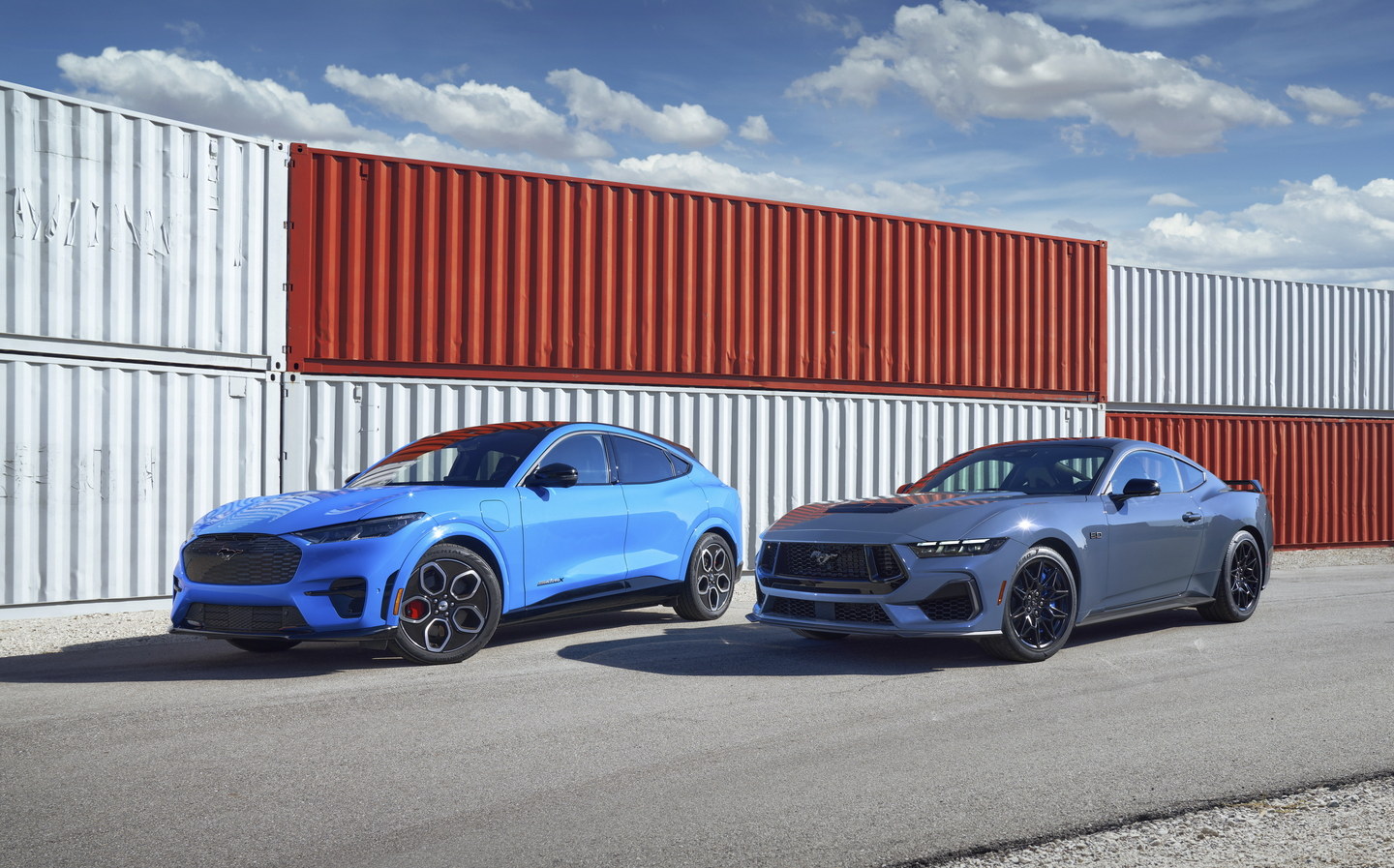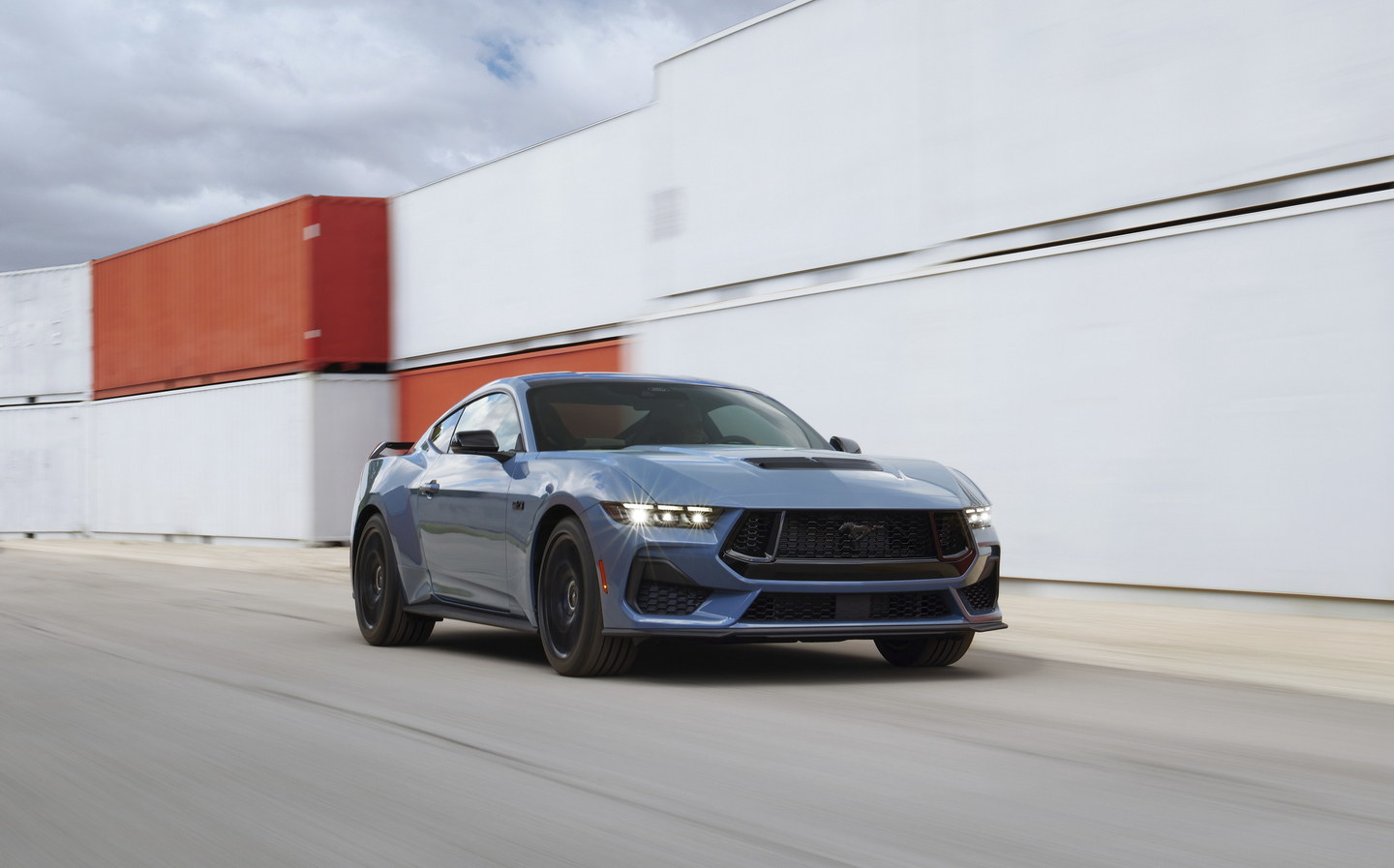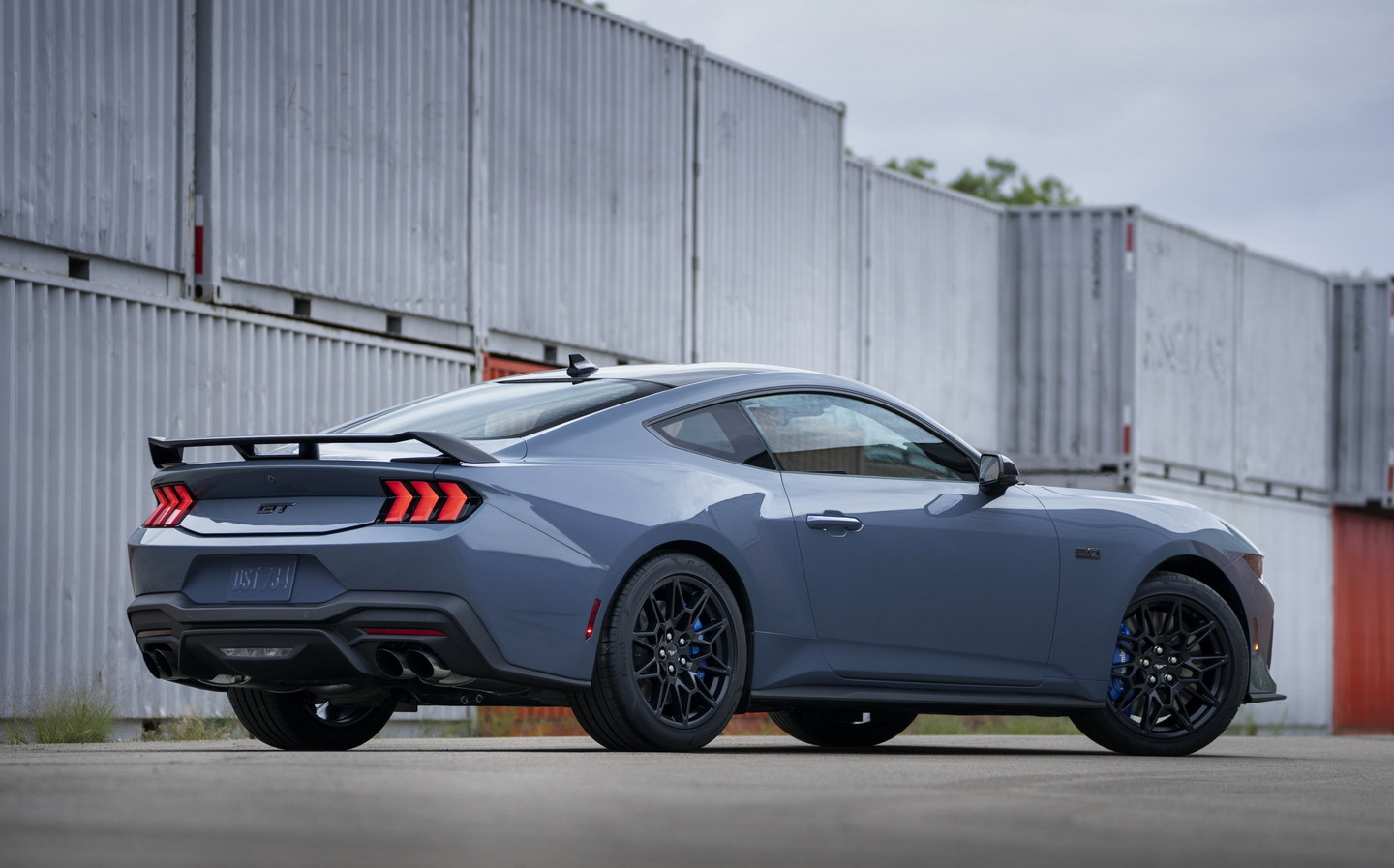New Ford Mustang revealed — and it may be the legendary model's petrol-powered swansong
Lack of physical air-con controls blamed on Millennials
Ford has revealed a new seventh-generation Mustang coupé and convertible with a light styling rework compared to the outgoing model and a new heavily digitised interior, though the engines remain largely the same.
As the new Mustang is based on the same underpinnings as the previous model, there’s unlikely to be a hybrid or pure-electric version this time round, but in light of emissions reduction targets and Ford’s commitment to electrifying its range, this may be the last wholly petrol-powered generation of the firm’s “pony car”.

“Investing in another generation of Mustang is a big statement at a time when many of our competitors are exiting the business of internal combustion vehicles,” said Jim Farley, Ford’s CEO.
“Ford, however, is turbocharging its ICE [internal combustion engine] growth plan, adding connected technology, opinionated derivatives, and hybrid options to our most profitable and popular cars – all in the Ford Blue family – on top of investing $50 billion in electric vehicles through 2026.”
The new car’s styling isn’t a radical departure from the last model. The LED headlights are new, as are the three-element rear lights — a reinterpretation of the design seen on Mustangs of old as well as on the current Mustang Mach-E.
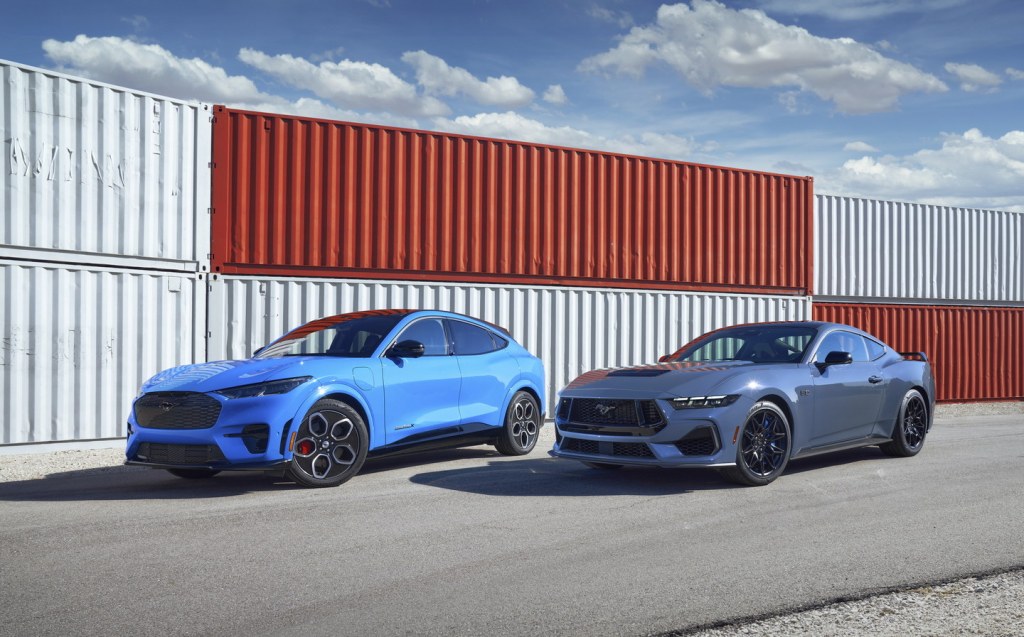
Both models in the line-up receive a different front-end treatment from each other, with the V8 GT leaning into a more performance-oriented look with a bigger, more aggressive grille opening to channel more air to that 5-litre engine; the 2.3 is a little more demure in its looks.
While the exterior may not be very different to that of the car it replaces, the interior of the new Mustang very much is.
Once behind the wheel, the driver is faced by a 12.4in customisable digital instrument cluster that blends seamlessly into the 13.2in central touchscreen angled slightly towards the driver. While there may not be any physical dials, at least the instrument cluster can be customised to display a digital interpretation of an old-fashioned speedometer and rev counter.
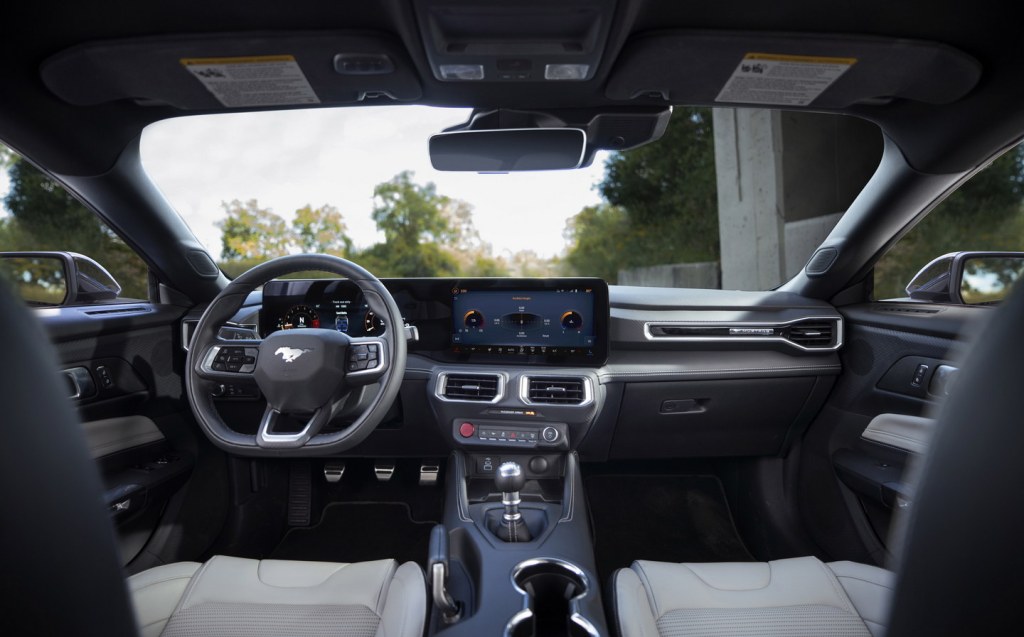
The new multimedia system runs the latest version of Ford’s Sync 4 software meaning that it’s fully (and wirelessly) compatible with both Android Auto and Apple CarPlay.
Partly because of the bigger screens, there are fewer physical buttons in the Mustang’s cockpit now, with the controls for the stereo system and climate control relegated to functions on the digital display, a move Ford dubiously blames on younger Mustang buyers.
“We knew what customers wanted and designed the most digital Mustang ever while retaining the all-important driver-focused cockpit,” said Ricardo Garcia, Ford’s interior design manager.
“Removing some of these physical buttons, such as radio and climate control, and integrating them into a digital display was popular in research with Millennials, Gen-Z and traditional Mustang drivers alike.”
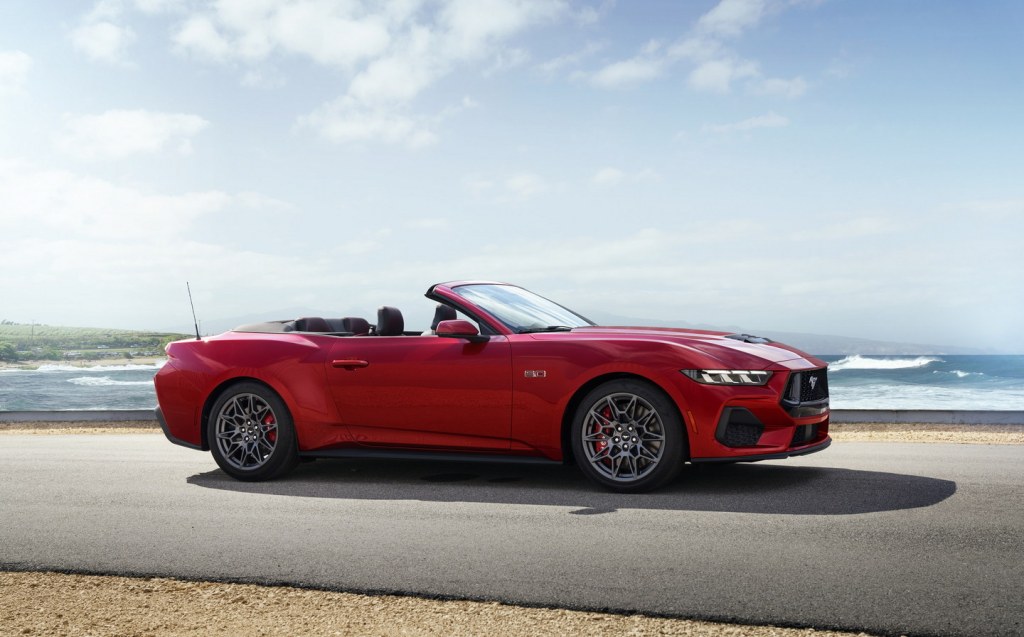
Though the seventh-generation Mustang employs the same engines as before, the smaller 2.3-litre four-cylinder turbocharged unit has seen some work with a new turbo and mechanical tweaks, though not much has changed with the Coyote V8.
The 2.3-litre engine sends its power to the wheels exclusively via a 10-speed automatic transmission and, while that gearbox is also available on the V8 model, there’s also the option of a six-speed manual.
Making spirited driving that bit more accessible are a sport limited-slip differential, which improved traction through turns, along with quicker steering, 19in Brembo brakes for increased stopping power, optional MagneRide adaptive dampers to soften or stiffen the ride, a rev-matching function, and driving modes that include self-explanatory settings such as “Slippery”, “Drag” and “Track”.
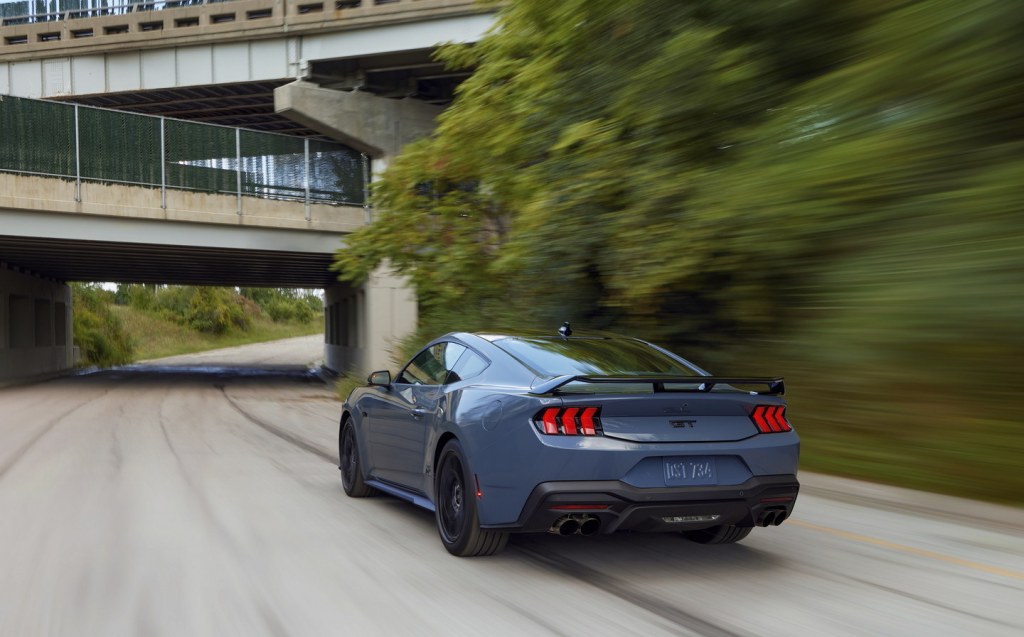
For those trademark burnouts, there’s still a “line-lock” feature that holds the front brakes and allows drivers to leave a big fug of tyre smoke in their wake.
Making even more use of the Mustang’s performance potential, however, is a new track-focused model dubbed the Dark Horse.
The Dark Horse increase the performance of the standard V8, adds an auxiliary engine oil cooler and transmission oil cooler (for automatic models), along with a lightweight, more efficient radiator, bigger cooling fans and a rear axle cooler.
The performance package also includes different chassis tuning with 19in Brembo front brakes, Pirelli P-Zero PZ4 tyres and suspension upgrades. The MagneRide adaptive dampers appear as standard in this package.
Though a traditional handbrake is absent, there’s an “electronic drift brake” to allow drivers of all abilities to unleash the Mustang’s tail-happy side.
The styling of the Dark Horse is more aggressive still than that of the V8 GT, and replaces the traditional side-on pony logo throughout with a forward-facing horse.




“This is the first time for Mustang that we’ve ever had a forward-facing horse,” said Joel Piaskowski, global director at Ford Design.
“It’s aggressive, a bit sinister and it’s coming from the shadows head-on to win.”
Race ready
Speaking of winning, Ford says that the introduction of the Dark Horse provides the basis for a new Mustang racing car that will compete in various series around the globe including NASCAR and at GT3 and GT4 level.
Facilitating this for privateers will be an off-the-shelf track-only Mustang Dark Horse S, sold minus non-essentials and fitted with a full FIA-certified safety cage, safety nets, a race seat with safety belts and a race steering wheel with quick disconnect. Other safety items include electrical disconnects and a fire suppression system.
Ford says that it is returning to factory-backed GT3 racing in 2024, competing in the North American IMSA GT3 series in a new GT3 Mustang that will also be available to customers.
The Blue Oval’s GT3 campaign will start with the 2024 24 Hours of Daytona and, with a new Mustang GT4 racer also available to customers and eligible to compete in the FIA’s GT series, there’s also the possibility that maybe, just maybe, Ford could return to Le Mans.
Related articles
- After reading about the new Ford Mustang, you might be interested in Will Dron’s extended test in the Ford Mustang Mach-E
- Did you know Ford has a new Supervan, and this time its electric … with 1,973bhp
- Take a look at all the carmakers’ electric vehicle plans
Latest articles
- Should I buy a diesel car in 2025?
- F1 2025 calendar and race reports: The new Formula One season as it happens
- Zeekr 7X AWD 2025 review: A fast, spacious and high tech premium SUV — but someone call the chassis chief
- Denza Z9GT 2025 review: Flawed but sleek 1,062bhp shooting brake from BYD’s luxury arm
- Extended test: 2024 Renault Scenic E-Tech review
- Best-selling cars 2025: The UK’s ten most popular models of the year so far
- Audi A6 Avant 2025 review: Trusty executive estate ticks expected boxes, and there’s still a diesel option
- Keir Starmer eases pressure on carmakers to sell EVs in response to ‘global economic headwinds’
- Ferrari 12Cilindri Spider review: Heady blend of traditional and futuristic becomes even more intoxicating after lid is removed


